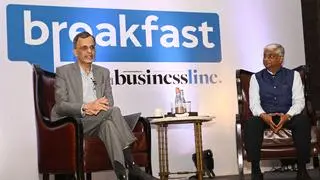Brands cannot afford to be ageists and ignore mature consumers. According to a global report by BCG, consumers aged 50-70 years in 12 key markets that include India, contributed 27 per cent of spending of around $7 trillion each year across nine product categories.
Titled ‘Don’t Overlook Your Mature Consumers’, a report by Boston Consulting Group (BCG) Center for Customer Insight looked at 870 million consumers in this age bracket across 12 markets. This included Brazil, China, France, Germany, India, Italy, Japan, Spain, Sweden, Thailand, the UK, and the US. It noted that the size of this consumer demographic will continue to increase over the next several decades, reaching almost 1.1 billion in 2050 across these countries.
“Mature consumers are relatively resilient to economic shocks, buy high-quality products that they value, and exert considerable influence on younger consumers’ purchasing decisions,” the report noted.
In India, consumers in this age bracket account for 15 per cent of spending percentage, which is rapidly growing. In markets such as China and US, they account for 30 per cent. The report emphasised that ageing will transform the demographic structure of every market, including those that have relatively young population. In India, this demographic percentage of the population will grow from about 16 per cent in 2020 to 25 per cent in 2050.
“Mature consumers are interested in trying new things and desire to experience an adventure. These sentiments are true not only in the US and Germany, where mature consumers feel more financially secure, but also in India. Because they tend to be financially secure and resilient spenders, mature consumers are a highly valuable consumer segment, especially in times of economic uncertainty,” it added.
Aparna Bharadwaj, a BCG managing director and partner, who leads the firm’s Center for Customer Insight, said: “Mature consumers are often ignored by brand marketing, largely because of a number of lingering misconceptions. They are perceived as being price-sensitive and reliant on brick-and-mortar stores for their purchases. Nothing could be further from the truth. But marketers fail to recognise their role as trend setters, and they struggle to engage them through conventional marketing techniques.”
Online shopping
In fact, mature consumers are active online and nearly 90 per cent of them use social-media platforms daily, the report added. In the US, for instance, 46 per cent of mature consumers purchase apparel online, compared with only 36 per cent of the younger demographic.








Comments
Comments have to be in English, and in full sentences. They cannot be abusive or personal. Please abide by our community guidelines for posting your comments.
We have migrated to a new commenting platform. If you are already a registered user of TheHindu Businessline and logged in, you may continue to engage with our articles. If you do not have an account please register and login to post comments. Users can access their older comments by logging into their accounts on Vuukle.